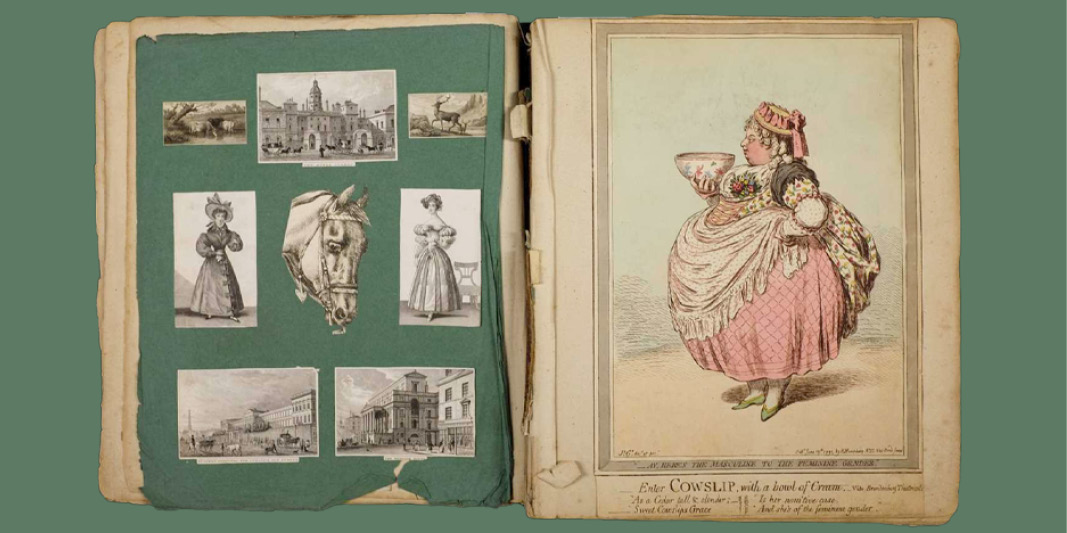
RESCHEDULED - Collage before Modernism? Composite cultural production 1680-1912 Dr Freya Gowrley, University of Bristol
Event details
History of Art Research Seminar
In the 1790s, when the cousins Jane and Mary Parminter of ‘A la Ronde’ (the house in which they lived together in Exmouth, Devon) ornamented the surfaces of their home with shells, paper, feathers, and bones, they were engaging in an aesthetic and intellectual tradition of collage production that had been prevalent for decades, and which would endure throughout the nineteenth century. Nevertheless, thanks to the low status occupied by women’s craft practices in the art historical canon, collage produced during this period has consistently been overlooked in histories of the genre, which usually attribute the invention of collage to the Cubist artists Pablo Picasso and Georges Braque in 1912.
This critical neglect has reinforced entrenched hierarchies within art history; differences between ‘high’ and ‘low’ art; divisions of modern and pre-modern; and the gendered separation between artist and amateur. Yet collage produced in the eighteenth and nineteenth centuries represents a vital moment in its history, when an unprecedented variety of composite objects proliferated thanks to the new availability of material and printed goods that characterised this period.
The Parminter’s decoration can therefore be situated in relation to a wide range of composite visual, material, and textual forms of production that were pervasive across the British empire at this time, and which included the creation of traditional paper collage, bibliographic objects such as scrapbooks and albums, scientific objects like herbaria, and craft practices such as paper cutting, quilting, and the creation of shell- and feather-work. Indeed, though the term collage is most often associated with paper, the centuries before modernism saw a diverse proliferation of assembled forms, discussed together for the first time in this project as examples of ‘composite cultural production’.